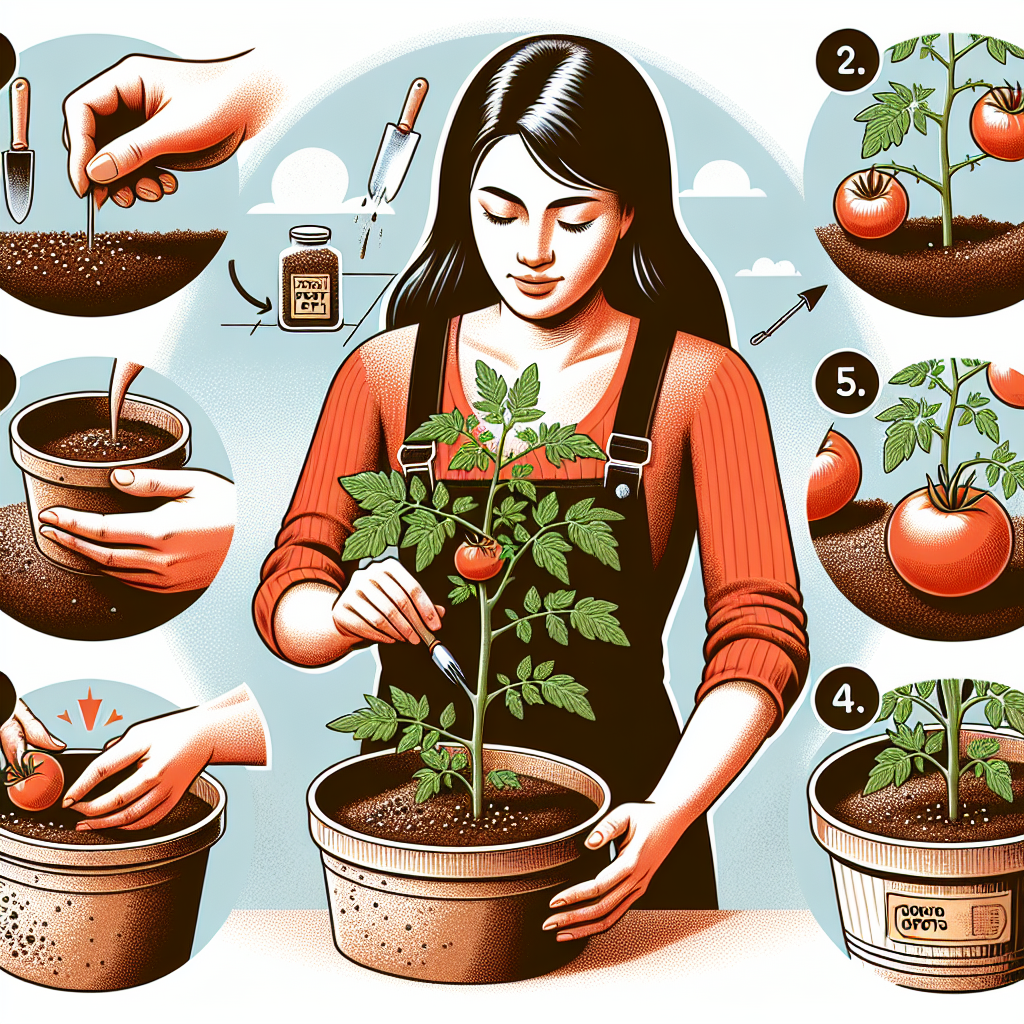
How to use tomato grow pots
Introduction to Tomato Grow Pots
Growing your own tomatoes can be one of the most rewarding experiences for a home gardener. Whether you’re a beginner or an experienced green thumb, understanding the best practices for cultivating tomatoes can enhance your gardening endeavors. One of the most effective ways to grow vibrant tomatoes is by using tomato grow pots. These containers provide a controlled environment that can optimize growth, improve yield, and even extend your growing season.
Why Choose Tomato Grow Pots?
Tomato grow pots offer several advantages that make them an ideal choice for cultivating tomatoes:
- Mobile Gardening: Pots can be moved to take advantage of the best sunlight and weather conditions.
- Controlled Environment: They help in regulating soil conditions and moisture levels.
- Space Efficiency: Perfect for urban gardeners with limited space or for those who wish to grow tomatoes on patios or balconies.
- Problem Prevention: Reduce issues with soilborne diseases, pests, and weeds.
Types of Tomato Grow Pots
When selecting pots for your tomato plants, there are various types available that cater to different needs and environments. Here’s a breakdown:
- Plastic Pots: Lightweight and cost-effective, ideal for beginners.
- Fabric Pots: Good for aeration and drainage; they encourage healthy root development.
- Self-Watering Pots: These help maintain consistent moisture levels.
- Terracotta Pots: Attractive but may require more frequent watering due to their porous nature.
How to Use Tomato Grow Pots Effectively
To maximize your success with tomato grow pots, follow these essential steps:
Selecting the Right Size Pot
Choosing the appropriate size for your tomato grow pot is crucial. Generally, larger pots allow for healthier root systems and better moisture retention. Here is a quick guide:
- Small Varieties: 5-7 gallon pots are ideal for determinate varieties.
- Large Varieties: 10-15 gallon pots work best for indeterminate types.
- Height Consideration: Taller pots may be preferable for certain varieties to accommodate root growth.
Preparing Your Tomato Grow Pots
Preparation is key to ensuring your tomato plants thrive. Follow these steps:
- Choose Quality Potting Mix: Avoid garden soil; opt for a premium potting mix formulated for vegetable gardening.
- Enhance Soil Quality: Incorporate compost to enrich the soil and provide necessary nutrients.
- Ensure Proper Drainage: If using solid pots, make sure they have adequate drainage holes to prevent root rot.
Planting Your Tomato Seeds or Seedlings
Once your pots are prepared, it’s time to plant:
- Seeds: If starting from seeds, plant them about ¼ inch deep in a warm environment.
- Seedlings: When transplanting seedlings, bury them deeper in the pot—up to the first set of leaves—to promote additional root growth.
Watering Practices
Understanding how to properly water your tomato plants is critical. Here are some guidelines:
- Frequency: Water your pots consistently; they usually require watering every 2-3 days, depending on weather conditions.
- Method: Water at the base of the plant to prevent wetting the foliage, which can lead to disease.
- Moisture Check: Use your finger to check 1-2 inches below the surface—if dry, it’s time to water.
Fertilizing Your Tomatoes
Tomatoes are heavy feeders, meaning they require a good amount of nutrients. Here’s how you can effectively fertilize:
- Initial Fertilization: Apply a balanced fertilizer when first planting.
- Follow-Up Feeding: Use a phosphorus-heavy fertilizer once the plants begin to fruit.
- Organic Options: Incorporate compost or well-rotted manure for a natural boost.
Pest and Disease Management in Pots
Growing tomatoes in pots can reduce some common gardening issues, but vigilance is still necessary. Here are some methods to protect your plants:
- Inspect Regularly: Check leaves and stems regularly for signs of pests, such as aphids or spider mites.
- Prevent Diseases: Avoid overcrowding the pots, as good airflow can help prevent fungal diseases.
- Organic Treatments: Consider using Neem oil or insecticidal soap for pest control.
Common Tomato Growing Problems and Solutions
Identifying and correcting problems quickly can save your crop. Here are some common issues:
- Blossom End Rot: Caused by calcium deficiency; use lime in the soil to correct it.
- Leaf Curling: Often a sign of stress from overheating or under-watering.
- Wilting: Indicates either over-watering or under-watering; check soil moisture to diagnose.
Harvesting Your Tomatoes
Knowing when to harvest is just as important as the growing process itself. Here’s what to look for:
- Color: Tomatoes should be a consistent color with a glossy finish when ripe.
- Firmness: They should feel firm but yield slightly to pressure.
- Time of Day: Harvest in the morning for optimal taste and texture.
Conclusion
In conclusion, understanding how to use tomato grow pots can significantly impact your gardening success. From selecting the right size pot to preparing and maintaining the plants, each step is essential for growing vibrant and delicious tomatoes. With the flexibility that pots offer, you can experiment with different varieties and gardening techniques to find what works best in your specific environment. Happy gardening!
By Guest, Published on August 7th, 2024